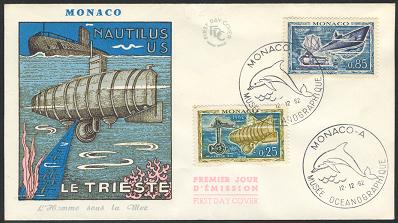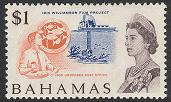|
John Williamson`s `Photosphere`, 1914
 John Ernest Williamson (1881-1966) was active in motion pictures for nearly 50 years. His father was a sea captain who had invented a deep-sea tube, made of a series of concentric, interlocking iron rings that stretched like an accordion. Suspended from a specially outfitted ship, this shaft into the sea allowed easy communication and a plentiful supply of air down to depths of up to 250 feet. When attached to a diving apparatus, the tube could assist in underwater repair and salvage work. John Ernest Williamson (1881-1966) was active in motion pictures for nearly 50 years. His father was a sea captain who had invented a deep-sea tube, made of a series of concentric, interlocking iron rings that stretched like an accordion. Suspended from a specially outfitted ship, this shaft into the sea allowed easy communication and a plentiful supply of air down to depths of up to 250 feet. When attached to a diving apparatus, the tube could assist in underwater repair and salvage work.
In 1912 young Williamson, then a journalist realized that his father`s mechanism could also be used to obtain undersea photographs. With a light hung from the mother ship to illuminate the sea in front of the tube, still photographs of the depths off Hampton Roads, Va., proved so successful that Williamson was urged to try motion pictures.
To facilitate the tube`s new purpose, `J.E.` (as he was known) designed a spherical observation chamber with a large funnel-shaped glass window, 5 feet in diameter and an inch-and-a-half thick. Williamson called this device a `photosphere`, and it was attached to the end of the tube. The equipment was taken to the Bahamas, where the sunlight reached down to a depth of 150 feet in the clear waters, enhancing photographic possibilities. A special barge was built to carry the tube and photosphere, and christened the Jules Verne in honor of Williamson`s inspiration.
The first production of the Submarine Film Corp. was made in the spring of 1914, a one-hour documentary ingeniously titled `Thirty Leagues Under the Sea`. The movie`s climax was J.E.`s fight with a shark, which he killed with a knife while remaining within the camera`s range.
A fictional film was the logical next step, and Jules Verne`s novel Twenty Thousand Leagues Under the Sea was an obvious and potentially breathtaking subject. Production began in the Bahamas in the spring of 1916, facing many perils. A heavy sea would rock the barge from which the tube was suspended, or the waters might become cloudy with sediment, making photography from inside the photosphere impossible. As men in diving suits, portraying Captain Nemo`s crew, enacted the undersea funeral or a fight with the denizens of the deep, they were actually menaced by nearby barracudas. Upon its release, `Twenty Thousand Leagues Under the Sea` became a major popular success, enhanced by the public concern with submarine warfare during World War I.
When Walt Disney produced a remake of `20,000 Leagues Under the Sea” in 1954, the same locales were used that Williamson had found almost 40 years earlier.
For J.E.`s third movie, `The Submarine Eye` (1917), he wrote a scenario telling of the inventor of an inverted undersea periscope who discovers a lost treasure in the depths.
In search of authenticity, Williamson always took his camera to the ocean floor, never settling for the ease of shooting in a tank, a method increasingly used for supposed undersea scenes in Hollywood productions. J.E. was inherently involved with the scripting and directing of scenes that could be obtained with the photosphere. As a result, sunken treasure, sea monsters, mermaids and shipwrecks became motifs in his films, including `Girl of the Sea` (1920), `Wet Gold` (1921), `Wonders of the Sea`(1922) and his first color film, The Uninvited Guest (1924).
In Williamson`s 1932 documentary on his work, `With Williamson Beneath the Sea`, in addition to demonstrating his filming techniques, the film also reveals the scientific uses of the photosphere in exploring the deep. From inside the photosphere, J.E., Lilah-his wife, study the life of the creatures of the bottom, making photographs, sketches and paintings of the fish and plants seen through the window.
In connection with a 1939 expedition, the photosphere was turned into the world`s first undersea post office, and over the years Williamson devised a number of special philatelic commemoratives.
After Williamson shot scenes in Technicolor for Paramount`s `Bahamas Passage` in 1941, the photosphere was opened to visitors for the first time and finally brought ashore in the late 1940s. Williamson`s last film was a half- hour condensation of `With Williamson Beneath the Sea`, made in 1955 for the television series “I Search for Adventure.” Although using much of the earlier footage, the television film had entirely new on-camera interviews and narration by Williamson.
Back to History Index
 |
Monaco |
1962 |
Bathyscaphe Trieste and Williamson's Photosphere 1914, 12 Dec' 1962 |
 |
Bahamas, The |
1967 |
Williamson filim project, photospher |
 |
Turks and Caicos Is. |
1997 |
Bathysphere.John Williamson makes first underwater movies 1914 |
 |
Palau |
2000 |
Photosphere, 1914 first underwater movies are made by John Williamson |
|